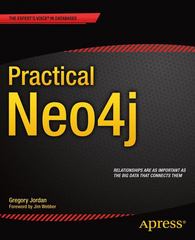Answered step by step
Verified Expert Solution
Question
1 Approved Answer
Problem Statement: Resource Sharing Application Design Objective: Design and implement an item - sharing application / website where users can post general items ( e
Problem Statement: Resource Sharing Application Design
Objective: Design and implement an itemsharing applicationwebsite where users can post
general items eg lawnmowers, hoses, vacuum cleaners for other users within the same
community to either rent for a limited time or buy at a discounted price. The system should
handle cases such as double bookings, late returns, and handoffs back to the owner, as well as
provide a system for inquiries.
Detailed Description:
The app is a platform designed to facilitate the sharing of occasional or onetimeuse items like
helmets for visitors, books, etc. within local communities. Its primary goal is to allow users to
give away items they no longer need, and to find items they are looking for, all within their local
area.
The details of the application asked by you are given below.
Key Features:
Item Listings: Users can list items they want to give away, rent, or sell by uploading
photos, adding descriptions, and specifying the location for pickup or rental duration.
Listings can include household items, clothes, books, and more.
Search and Filters: The app provides robust search functionality, allowing users to find
items by category, location, and keywords. Filters help narrow down results to make
finding specific items easier.
GeoLocation Services: The app uses geolocation to show users items available
nearby. This encourages local sharing and makes it convenient for users to pick up or
rent items.
Chat Functionality: Users can communicate with each other through the apps chat
feature to arrange the details of the exchange. This ensures privacy and security by
keeping communication within the app.
User Profiles and Ratings: Each user has a profile that displays their listings and their
activity history. Users can rate each other based on their experiences, helping to build
trust within the community.
Notifications: The app sends notifications to users about new listings that match their
interests, messages from other users, and reminders about scheduled pickups or rental
returns.
Safety Features: The app includes safety guidelines and tips to ensure that users feel
secure when meeting up to exchange items. Users can report inappropriate behavior or
listings directly within the app.
Bidding Feature: Users can either price their item at a fixed price or have an auction for
the item with the highest bidder winning
Benefits:
Saves Money: Users can save money by finding items they need for free or at a
discounted price.
Builds Community: The app strengthens local communities by connecting people who
can help each other.
Flexible Options: Users can choose to give away items, rent them for a limited time, or
sell them at discounted prices.
Overall, the app is a valuable tool for anyone looking to declutter their home, find useful items,
and contribute to a more connected community
OutputOutcome:
The design document should provide a comprehensive explanation of the following:
The architecture of the backend system.
The various API endpoints.
The functionality and purpose of each query.
The methodology for querying the system and the expected results of each query.
The above information should be explained using:
A highlevel Architecture diagram
High level and lowlevel designs of the different components
Architecture and design patterns used
Use cases for the application. You can use certain specific examples to showcase endtoend technical working of the application and system when an item is posted for
salerent to when the item is picked up and paid for to when the item is returned back to
the owner.
Each question is of marks.
Please upload the Technical Design Document that was asked to be prepared before
the start of the quiz.
What design changes need to be made to implement an inapp payment system?
Further, how should this design be changed to implement a system where a bill can be
split between multiple people?
How does this system handle late handoffs from a borrower of an item which could affect
the next booking on the same item?
How does the system handle a situation where a user has bid for an item and won the
auction however they then decide to not pay for the item?
How does the system scale to millions of users across multiple geographical territories
accessing the application at the same time? What measures are in place to ensure the
system remains responsive and performant under load?
How does the system handle failure to return a borrowed item?
Step by Step Solution
There are 3 Steps involved in it
Step: 1

Get Instant Access to Expert-Tailored Solutions
See step-by-step solutions with expert insights and AI powered tools for academic success
Step: 2

Step: 3

Ace Your Homework with AI
Get the answers you need in no time with our AI-driven, step-by-step assistance
Get Started


